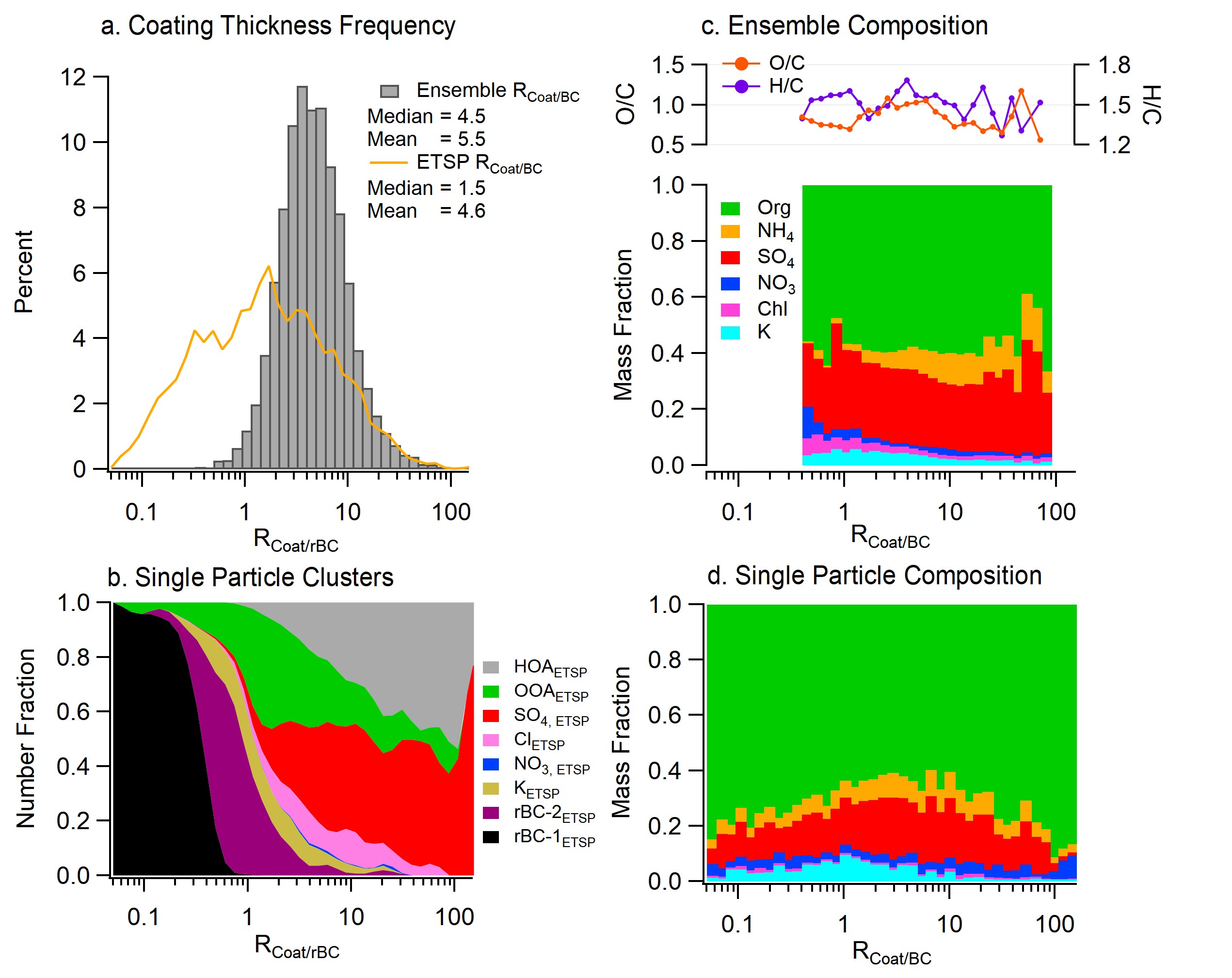Chemical properties and single-particle mixing state of soot aerosol in Houston during TRACER
Submitter
Zhang, Qi — University of California, Davis
Area of Research
Aerosol Properties
Journal Reference
Farley R, J Lee, L Rivellini, A Lee, R Dal Porto, C Cappa, K Gorkowski, A Shawon, K Benedict, A Aiken, M Dubey, and Q Zhang. 2024. "Chemical properties and single-particle mixing state of soot aerosol in Houston during the TRACER campaign." Atmospheric Chemistry and Physics, 24(7), 10.5194/acp-24-3953-2024.
Science

Our comprehensive measurements of black carbon (BC)-containing aerosols, conducted during the TRACER campaign, provided detailed insights into the composition, behavior, and variability of soot aerosols in Houston. We find that the coating thickness of individual BC particles and their mixing with other species vary significantly, influenced by diverse emission sources in the region as well as atmospheric processing.
Impact
Our research sheds lights on the emission sources and aging processes of soot aerosols, as well as their activation into cloud droplets. Our findings highlight the critical need to understand the variability of soot aerosols across different environments for accurate evaluation of climate change impacts.
Summary
Soot particles directly absorb sunlight, contributing to global warming. However, the properties of these particles are heavily influenced by how BC is mixed with other substances. Variations in this mixing state can increase the incorporation of BC into cloud droplets and alter the atmospheric lifetime of BC. To better understand the composition and properties of soot particles in urban environments, we conducted both bulk and single-particle measurements of BC-containing particles using a soot particle aerosol mass spectrometer during summer 2022 in Houston, Texas. We observed significant variability in the coating thickness of BC, with coating-to-BC mass ratios of individual soot aerosols ranging from 0.1 to 100. The soot aerosol population exhibited characteristics that are intermediate between internal and external mixing, but with considerable temporal and source variability. Many soot particles contained a substantial amount of hygroscopic coating material, indicating a high likelihood of activation into cloud droplets under atmospherically relevant supersaturation conditions. These findings bear significance in comprehending the aging processes of soot aerosols and their potential to act as cloud condensation nuclei.
Keep up with the Atmospheric Observer
Updates on ARM news, events, and opportunities delivered to your inbox
ARM User Profile
ARM welcomes users from all institutions and nations. A free ARM user account is needed to access ARM data.


















